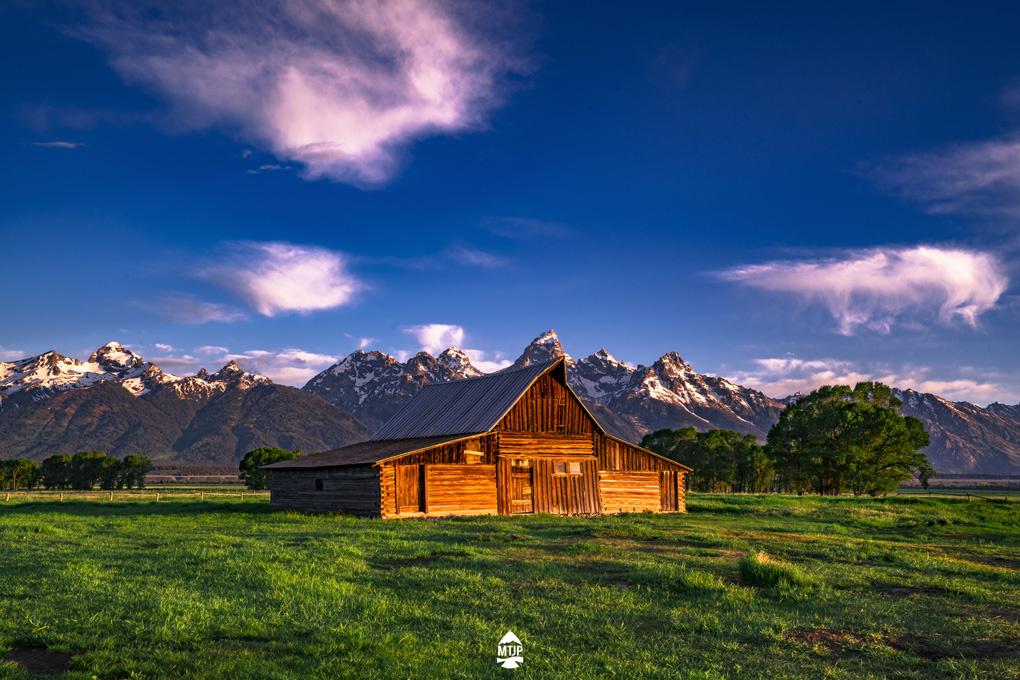In the latest installment of the “More Than Just Parks” series, filmmakers Will Pattiz and Jim Pattiz journey through Grand Teton National Park and capture breathtaking visuals of the natural vistas and wildlife. Their video series aims to document all 59 national parks through beautiful imagery in order to promote the protection and enjoyment of these lands. After you check out the new video (it does not disappoint), the Pattiz brothers share with Fstoppers some of their experiences and challenges working on “Grand Teton” and the video series altogether.
As the final product of shooting for nearly a month, “Grand Teton” is simply magnificent. It is so well done that I might call it seemingly effortless. As if when you go to Grand Teton National Park you can expect marvels day in and day out just like those capture here. It makes the short film approachable and uncomplicated, and allows you to just enjoy the great outdoors.
The readers of Fstoppers surely understand already that this project was anything but effortless though. We are talking extensive planning before arrival and then the grueling all-day work while on-site for weeks on end, followed up by sifting through countless hours of film to edit.
According to Jim, the 5:30 a.m. sunrise in the Tetons is like nowhere else on earth and no question the best time of day to shoot. “The first light on the mountains gives a brilliant red hue to the peaks and the surrounding sky, making for a surreal watercolor-like experience,” said Jim. The key to capturing the magical light in the Tetons, he said, is to get up early. The popular locations such as the T.A. Moulton Barn, Oxbow Bend, and Schwabachers Landing receive photographers setting up as early as 3:30 a.m.
Of course waking up to shoot sunrise and then capturing the stars at night is going to cause some issues. Will tells me that the “Grand Teton” project was the most taxing and difficult “More Than Just Parks” expedition so far. They would be up at 4 a.m. on a typical day to get their sunrise footage, and hopefully get to bed around 12 to 1 a.m. after capturing the stars. “We can do three hours of sleep no problem for one or two nights, but after a week and more it definitely takes its toll on a shoot,” said Will. “Combine long days with long hikes full of incredible material to shoot and you can come fairly close to exhaustion!” Despite the lengthy shooting days, Will acknowledges it was still an unbelievably fun and exciting time.
Grand Teton National Park is the eighth location completed so far in the series. After reflecting on what was learned so far through all of this, Will had to say being flexible was one of the major keys to success. Because conditions are always changing while doing an extended outdoor shoot, being able to adapt is very important. He told me that during the planning phase of these expeditions, they always do the research for a backup national park. “When we flew out to shoot our Redwood film we didn’t know that’s the park we’d end up shooting,” Will said. Instead, Will and Jim were actually on their way to shoot Mount Rainier National Park as the next film’s subject. After over a month of planning to do a Mount Rainier shoot, they were headed to Seattle to get started. However, Mother Nature had other plans and a wildfire had broken out near the park two days before they arrived. “We were aware of this but did not believe it would significantly impact our shoot until we arrived in the park,” said Will. “Upon arrival we looked up and could hardly even see the mountain due to the smoke haze.” Their backup in this case were the Redwood National and State Parks.
Will continued, “We were flexible and it paid off. Our planning is designed to maintain maximum flexibility in our schedule. If there’s great clouds one day we’ll head to the locations we’ve determined would be great for that. If it’s raining, we’ll head to locations that we’ve determined will be best for that. If the weather is going to be especially terrible for a day or two we might go to another park and shoot for a couple of days knowing we’ll probably be able to use that footage later.” He emphasizes the importance of contingencies being in place for just about everything so that they can be flexible enough to adapt to unpredictable conditions.
“Grand Teton” was filmed using the Sony a7R II, Canon 5D Mark III, and Blackmagic Production Camera 4K along with the Radian and Michron time-lapse devices from Alpine Labs.
If you’d like to learn more about their Grand Teton National Park journey, check out this mini-site that has more information including shooting locations for the film. You can also purchase prints or donate money to help continue the “More Than Just Parks” project.
Follow “More Than Just Parks” on Facebook, Twitter, and Instagram.










![Photographer and Former 'America's Next Top Model' Judge Nigel Barker Launches 'Top Photographer' [Exclusive Interview]](https://cdn.fstoppers.com/styles/small-16-9/s3/lead/2016/08/nigel-barker-fstoppers-interview.jpg)
Breatakingly gorgeous and a labor of love to be loved and appreciated - even bowed down to - as a masterpiece of pre-visualization, execution and surprise. Congratulations …
I'm surprised the 180 degree shutter rule gets so much attention for video, and yet so frequently ignored for timelapse. They clearly put a lot of time and effort into making a great video, I'm just surprised they didn't go the extra 1% effort of using some strong ND and smoothing out all the motion.
Thanks to technology people can skip technical background and go straight into creative part. That's why you have so many very good productions, lacking that small part that would make it perfect. It happened in music long time ago, later in photography and now in video.
Stunning
amazing!
Great stuff!!!
https://www.flickr.com/photos/ajithraj/20890316825/in/album-721576577275...
https://www.flickr.com/photos/ajithraj/20853352982/in/album-721576577275...